Important Note: Please remember that the weight of your arrows can have a significant impact on accuracy and sighting-in. To get a better understanding of how this will impact your crossbow shooting experience, see our article: arrow drop – charted test results. Make sure to check out our best crossbow recommendations as well.
“Arrows” or “Bolts”? What’s The Difference?
Some people refer to the crossbow projectile as a bolt, while others call it an arrow. Both definitions are correct, however the word “bolt” can only be used in conjunction with a crossbow (never with a regular bow). Technically speaking, a bolt has no stabilizing vanes near the back, while an arrow always does. Linguistically speaking, however, whenever someone talks about crossbow bolts or arrows, they are usually speaking of the same thing. For the sake of simplicity, we’ll refer to it as a arrow in this article.
Different Parts of a Bolt & Specs
Most crossbow arrows are 16″ to 22″ in length, with the average being 20 inches. All crossbows come with a recommendation from the manufacturer regarding the length of the arrows you should use; when purchasing new arrows, you should make sure that they are the same length as recommended. Slightly longer arrows are usually fine, shorter ones are not because the tip could interfere with the crossbow rail (the groove where the arrow goes).
A crossbow arrow is made up of the following parts:
The Shaft
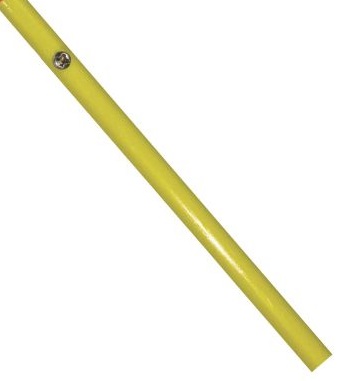 The shaft is the main “body” of an arrow, and it is to the shaft that all other elements of the (mentioned below) are attached. Most modern crossbow arrows are made from either aluminum or carbon; these materials are light-weight, do not splinter, and are very resistant to bending. A combination of both these materials is sometimes used as well.
The shaft is the main “body” of an arrow, and it is to the shaft that all other elements of the (mentioned below) are attached. Most modern crossbow arrows are made from either aluminum or carbon; these materials are light-weight, do not splinter, and are very resistant to bending. A combination of both these materials is sometimes used as well.
Shafts come with varying degrees of stiffness; that stiffness is referred to as the “spine” of the bolt. The more resistant to bending an arrow is, the more “spine” it is said to have.
The weight of the bolt shaft is expressed in “grains.” When buying a new set of bolts, the manufacturer will either provide the total weight in grains (for example: 350), or he may simply provide you with a GPI value, which is short for “Grains Per Inch.” If only the latter is provided, you can calculate the total weight by multiplying the length of the shaft in inches by its GPI. So if the shaft is rated at 15 GPI, and the total length of the shaft is 20 inches, then the total weight of the shaft is 15 x 20 = 300 grain.
You can then convert that weight into grams if you like by simply multiplying the grain weight by 0.0648. So in the above example, the shaft weight is 300 x 0.0648 = ~19.44 grams.
The Nock
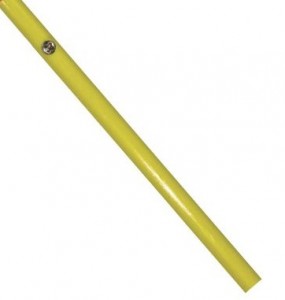 The nock is made from either plastic or aluminum in most cases, and it is attached to the back of the shaft. The purpose of a nock is to keep the bolt in place as you line up for the shot.
The nock is made from either plastic or aluminum in most cases, and it is attached to the back of the shaft. The purpose of a nock is to keep the bolt in place as you line up for the shot.
There are two primary types of nocks to be found on crossbow bolts: the half-moon (top image on the left), and the flat nock (bottom image). The half-moon nock has a groove that you will need to align with your string before you can fire the bolt.
Different manufacturers have different recommendations for the type of nocks that should be used on bolts fired from their crossbows. Barnett for example always recommends using half-moon nocks. If uncertain, give your manufacturer a call or send them an e-mail to find out what type of nock you need before purchasing new bolts. Check out these top carbon arrows rankings to get info on which types of nocks go best with some of the better arrows out there.
Fletchings
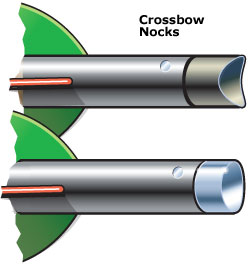 Fletchings are these little “wings” you’ll find at the back of the bolt, very close to to nock, and they serve the following purposes: to stabilize the trajectory of the bolt mid-flight, help it keep going in the proper direction, and to prevent it from pitching or swaying to the left or right. Fletchings will cause the bolt to spin around its axis during flight, increasing stability.
Fletchings are these little “wings” you’ll find at the back of the bolt, very close to to nock, and they serve the following purposes: to stabilize the trajectory of the bolt mid-flight, help it keep going in the proper direction, and to prevent it from pitching or swaying to the left or right. Fletchings will cause the bolt to spin around its axis during flight, increasing stability.
Modern bolts have 3 fletchings, made from a form of plastic; you might hear them referred to as vanes on occasion. More traditional fletchings are made from bird feathers, however these are never used on crossbow bolts.
Fletchings vary in length, and there is no “perfect” length to look for. As a general rule, the longer the arrow shaft, the longer the fletchings, and vice versa. When buying crossbow bolts they will always have a set of fletchings glued to them.
The Bolt Head
There are two primary types of arrowheads, and one of them is split further into 3 main sub-types. let’s go over them all quickly.
Field Points
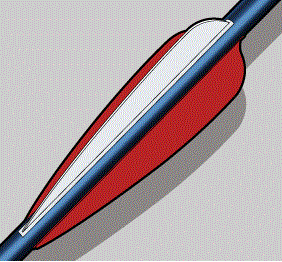
Also known as “Target points,” field points are exactly for that – target practice. They do not have any sharp edges so they cannot be used for hunting game as they won’t be able to cause enough internal damage to quickly kill the animal. They simply have a pointy-tip – just enough to have it dig deep into the practice target, but not enough to destroy it.
Field points are typically screwed into the front of the bolt shaft, though some very cheap bolts come with glued on, non-detachable points.
Most crossbow bolt field points weigh 125-150 grain total. When purchasing new points, make sure that they are the same weight as the original points that came with your crossbow (or a little heavier); using lighter field points than recommended by the manufacturer may lead to severe injury and damage to your crossbow.
Broad-Heads
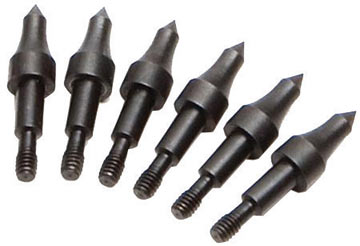
Click the image to the left to enlarge it. Broadheads are what you will use if you want to go hunting, and they are attached (screwed-in) to the tip of the bolt shaft, just like field points. The three basic types of broad-heads are:
Fixed-blade broadheads: as the name suggests, these come with fixed, razor-sharp blades that cannot be removed. The entire broad-head is one single element.
Removable-blade broadheads: here the blades can be removed from the broadhead and replaced if/when necessary.
Expandable-blade broadheads: in this type of broadhead, the blades are hidden and only open up once the arrow hits the animal, causing maximum damage.
It is up to you to choose which type of broadhead you prefer to hunt with, however my personal preference is with the expandable blades; that’s because there are no blades to reduce velocity mid-flight, and the bolt will fly pretty much just as fast as if a target practice field-point tip was attached. Expandable-blade models are a little more expensive than the other ones.
As with field tips, broadheads for a crossbow bolt will weight on average 125 to 150 grain, and they usually come in packs of three or six.
4 Important Things to Keep in Mind
- Make sure that both the field points and broadheads you use are of the same weight, and that this weight is exactly the same as the weight of the heads you received with the bolts that came with your crossbow.
- Never, ever use arrow shafts and arrow heads that are lighter than what is recommended by the manufacturer. While using heavier ones can be fine, using lighter ones can mean pretty much the same as dry-firing your crossbow, which will void your warranty, lead to crossbow malfunction, and could even be hazardous to your health.
- Most crossbow packages you buy will include bolts with target practice field points. You will have to buy the hunting broadheads separately.
- I already mentioned that you should never buy lighter arrows/heads than recommended by the manufacturer. What’s important to keep in mind is that using heavier arrows than recommended, while safe, will reduce the velocity (FPS) of your crossbow.
Crossbow Bolts – Summary
We hope that you’ve found this guide useful, and if you did, please help us out by clicking the “Like” or “Tweet” button below. Thank you!
Thanks to the guys at www.bowhunter-ed.com for granting us permission to use some of their images in this article.









































![Air gun 101: The differences between .177 & .22 – Which jobs they do best ? [Infographic]](https://airgunmaniac.com/wp-content/uploads/2020/09/g44-150x150.jpg)

